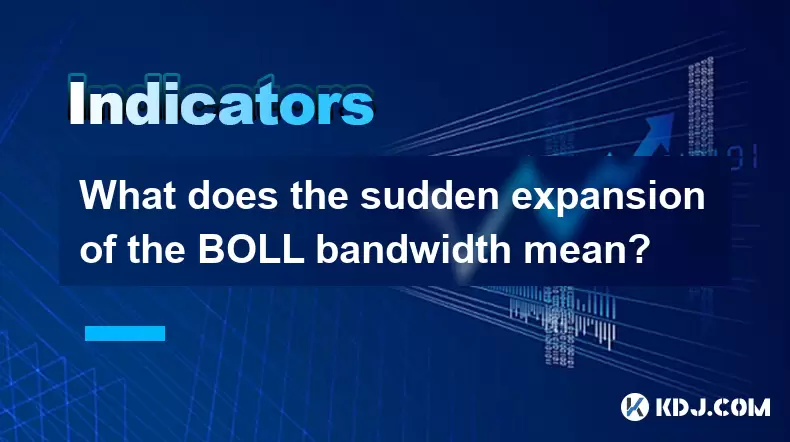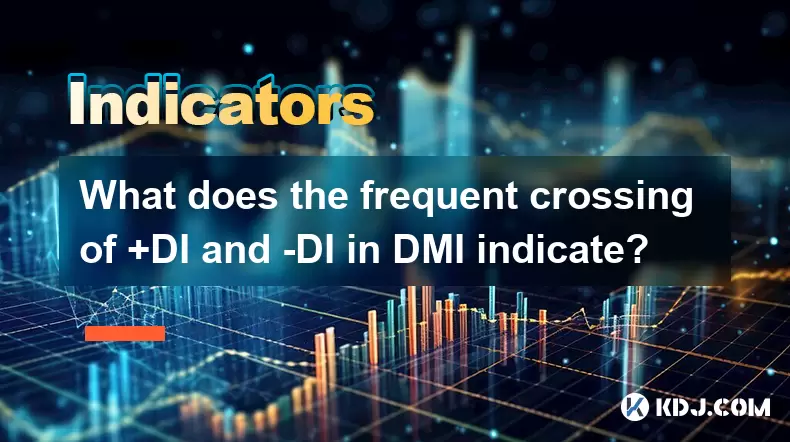-
 Bitcoin
Bitcoin $106,754.6083
1.33% -
 Ethereum
Ethereum $2,625.8249
3.80% -
 Tether USDt
Tether USDt $1.0001
-0.03% -
 XRP
XRP $2.1891
1.67% -
 BNB
BNB $654.5220
0.66% -
 Solana
Solana $156.9428
7.28% -
 USDC
USDC $0.9998
0.00% -
 Dogecoin
Dogecoin $0.1780
1.14% -
 TRON
TRON $0.2706
-0.16% -
 Cardano
Cardano $0.6470
2.77% -
 Hyperliquid
Hyperliquid $44.6467
10.24% -
 Sui
Sui $3.1128
3.86% -
 Bitcoin Cash
Bitcoin Cash $455.7646
3.00% -
 Chainlink
Chainlink $13.6858
4.08% -
 UNUS SED LEO
UNUS SED LEO $9.2682
0.21% -
 Avalanche
Avalanche $19.7433
3.79% -
 Stellar
Stellar $0.2616
1.64% -
 Toncoin
Toncoin $3.0222
2.19% -
 Shiba Inu
Shiba Inu $0.0...01220
1.49% -
 Hedera
Hedera $0.1580
2.75% -
 Litecoin
Litecoin $87.4964
2.29% -
 Polkadot
Polkadot $3.8958
3.05% -
 Ethena USDe
Ethena USDe $1.0000
-0.04% -
 Monero
Monero $317.2263
0.26% -
 Bitget Token
Bitget Token $4.5985
1.68% -
 Dai
Dai $0.9999
0.00% -
 Pepe
Pepe $0.0...01140
2.44% -
 Uniswap
Uniswap $7.6065
5.29% -
 Pi
Pi $0.6042
-2.00% -
 Aave
Aave $289.6343
6.02%
What does the sudden expansion of the BOLL bandwidth mean?
A sudden Bollinger Band expansion signals heightened crypto volatility, often from news, breakouts, or uncertainty—use with RSI/MACD to confirm trade direction.
Jun 21, 2025 at 01:49 pm

Understanding the BOLL Indicator
The BOLL (Bollinger Bands) indicator is a widely used technical analysis tool in cryptocurrency trading. It consists of three lines: a simple moving average (SMA) in the center, with upper and lower bands calculated based on standard deviations from that SMA. These bands dynamically adjust to price volatility.
When traders observe a sudden expansion of the BOLL bandwidth, it signals significant market activity. The widening of the bands indicates an increase in price volatility. This often occurs during major market events such as news releases, regulatory changes, or sudden shifts in investor sentiment within the crypto space.
Important: The BOLL bandwidth is calculated by subtracting the lower band from the upper band and dividing by the middle band. A larger result means wider bands and higher volatility.
Causes of Sudden Bandwidth Expansion
Several factors can lead to a rapid widening of the Bollinger Bands:
- Sharp price movements — Either upward or downward spikes cause volatility to surge.
- Market uncertainty — Events like regulatory announcements or exchange outages create panic or euphoria.
- High trading volume — Increased buying or selling pressure leads to erratic price behavior.
- Breakouts from consolidation phases — After a period of low volatility, a breakout can trigger sudden movement.
In the context of cryptocurrencies, which are known for their high volatility, these triggers often appear more frequently compared to traditional markets.
Interpreting the Signal
A sudden expansion of BOLL bandwidth doesn't inherently suggest a bullish or bearish trend. Instead, it highlights that the market is experiencing heightened volatility. Traders must look at additional indicators or chart patterns to determine the direction of the move.
For example:
- If the price breaks above the upper Bollinger Band after a long downtrend, it could signal a potential reversal.
- If the price drops below the lower Bollinger Band during a rally, it may indicate a short-term pullback.
It's crucial to combine this observation with tools like RSI, MACD, or volume charts to confirm potential entry or exit points.
Trading Strategies Around Bandwidth Expansion
Traders who understand how to interpret a rapid BOLL bandwidth expansion can implement several strategies:
- Momentum trading — Enter trades in the direction of the breakout once confirmation appears through candlestick patterns or volume surges.
- Mean reversion attempts — If the price touches or slightly exceeds the upper or lower bands without strong follow-through, some traders look for reversals.
- Volatility-based position sizing — Reduce exposure when volatility increases sharply to manage risk effectively.
However, false breakouts are common in crypto markets. Always set stop-loss orders and avoid over-leveraging during such periods.
How to Monitor BOLL Bandwidth Changes
Monitoring BOLL bandwidth expansion requires real-time charting tools. Platforms like TradingView, Binance’s native tools, or CoinMarketCap Pro allow users to customize Bollinger Bands and track bandwidth fluctuations.
To set up:
- Open your preferred charting platform.
- Add the Bollinger Bands indicator (default settings are usually 20-period SMA and 2 standard deviations).
- Enable the "Bandwidth" study if available, or calculate it manually using the formula: (Upper Band - Lower Band) / Middle Band.
Once configured, traders can visually identify when the bandwidth starts to expand rapidly, allowing them to react accordingly.
Frequently Asked Questions
What does it mean when Bollinger Bands contract after expanding?
After a sudden expansion, a contraction in Bollinger Bands suggests that volatility is decreasing. This could indicate a return to a sideways market or consolidation phase. In crypto, this often precedes another breakout, either continuation or reversal, depending on other technical cues.
Can Bollinger Bandwidth be used alone for trading decisions?
While Bollinger Bandwidth is a powerful tool for measuring volatility, it should not be used in isolation. Successful crypto traders typically combine it with other indicators like RSI for overbought/oversold signals or MACD for trend confirmation before making decisions.
Is Bollinger Bandwidth reliable across all timeframes in crypto trading?
Yes, but its effectiveness varies. Shorter timeframes like 5-minute or 15-minute charts show more frequent expansions due to micro-volatility in crypto. Longer timeframes like 4-hour or daily charts offer more meaningful signals, especially around major market events.
How often does BOLL bandwidth expansion occur in major cryptocurrencies like Bitcoin and Ethereum?
In highly liquid assets like Bitcoin and Ethereum, BOLL bandwidth expansion can occur multiple times a week, especially during periods of macroeconomic uncertainty or sector-specific developments. Monitoring these expansions helps traders stay ahead of potential breakouts or reversals.
Disclaimer:info@kdj.com
The information provided is not trading advice. kdj.com does not assume any responsibility for any investments made based on the information provided in this article. Cryptocurrencies are highly volatile and it is highly recommended that you invest with caution after thorough research!
If you believe that the content used on this website infringes your copyright, please contact us immediately (info@kdj.com) and we will delete it promptly.
- BNB Price Eyes $730 Target After ATH Rally Attempt
- 2025-06-21 16:25:12
- XRP Price: Market Breakout Imminent? Analyzing the Predictions
- 2025-06-21 16:25:12
- Shiba Inu, Cryptocurrency, and Investment: Beyond the Hype
- 2025-06-21 16:30:11
- AI Token Showdown: Can Ruvi AI Outpace Cardano to $1?
- 2025-06-21 16:45:11
- AI Token Race: Can Ruvi AI Outpace Cardano to the $1 Target?
- 2025-06-21 16:45:11
- Brand Ownership Redefined: Alki David's Crypto Revolution
- 2025-06-21 17:05:12
Related knowledge

Does the sudden contraction of ATR indicate the end of the trend?
Jun 20,2025 at 11:14pm
Understanding ATR and Its Role in Technical AnalysisThe Average True Range (ATR) is a technical indicator used to measure market volatility. Developed by J. Welles Wilder, ATR calculates the average range of price movement over a specified period, typically 14 periods. It does not indicate direction—only volatility. Traders use ATR to gauge how much an ...

Is it invalid if the DMI crosses but the ADX does not expand?
Jun 21,2025 at 09:35am
Understanding the DMI and ADX RelationshipIn technical analysis, the Directional Movement Index (DMI) consists of two lines: +DI (Positive Directional Indicator) and -DI (Negative Directional Indicator). These indicators are used to determine the direction of a trend. When +DI crosses above -DI, it is often interpreted as a bullish signal, while the opp...

Is the trend continuation when the Williams indicator is oversold but there is no rebound?
Jun 20,2025 at 11:42pm
Understanding the Williams %R IndicatorThe Williams %R indicator, also known as the Williams Percent Range, is a momentum oscillator used in technical analysis to identify overbought and oversold levels in price movements. It typically ranges from 0 to -100, where values above -20 are considered overbought and values below -80 are considered oversold. T...

What does the sudden expansion of the BOLL bandwidth mean?
Jun 21,2025 at 01:49pm
Understanding the BOLL IndicatorThe BOLL (Bollinger Bands) indicator is a widely used technical analysis tool in cryptocurrency trading. It consists of three lines: a simple moving average (SMA) in the center, with upper and lower bands calculated based on standard deviations from that SMA. These bands dynamically adjust to price volatility. When trader...

Is the golden cross of the ROC indicator below the zero axis effective?
Jun 20,2025 at 09:42pm
Understanding the ROC Indicator and Its Role in Cryptocurrency TradingThe Rate of Change (ROC) indicator is a momentum oscillator widely used by traders to assess the speed at which cryptocurrency prices are changing. It measures the percentage difference between the current price and the price from a certain number of periods ago. The ROC helps identif...

What does the frequent crossing of +DI and -DI in DMI indicate?
Jun 21,2025 at 05:14pm
Understanding the DMI and Its ComponentsThe Directional Movement Index (DMI) is a technical analysis tool used to identify the strength and direction of a trend. It consists of two lines: +DI (Positive Directional Indicator) and -DI (Negative Directional Indicator), along with the ADX (Average Directional Index) line which measures trend strength. In cr...

Does the sudden contraction of ATR indicate the end of the trend?
Jun 20,2025 at 11:14pm
Understanding ATR and Its Role in Technical AnalysisThe Average True Range (ATR) is a technical indicator used to measure market volatility. Developed by J. Welles Wilder, ATR calculates the average range of price movement over a specified period, typically 14 periods. It does not indicate direction—only volatility. Traders use ATR to gauge how much an ...

Is it invalid if the DMI crosses but the ADX does not expand?
Jun 21,2025 at 09:35am
Understanding the DMI and ADX RelationshipIn technical analysis, the Directional Movement Index (DMI) consists of two lines: +DI (Positive Directional Indicator) and -DI (Negative Directional Indicator). These indicators are used to determine the direction of a trend. When +DI crosses above -DI, it is often interpreted as a bullish signal, while the opp...

Is the trend continuation when the Williams indicator is oversold but there is no rebound?
Jun 20,2025 at 11:42pm
Understanding the Williams %R IndicatorThe Williams %R indicator, also known as the Williams Percent Range, is a momentum oscillator used in technical analysis to identify overbought and oversold levels in price movements. It typically ranges from 0 to -100, where values above -20 are considered overbought and values below -80 are considered oversold. T...

What does the sudden expansion of the BOLL bandwidth mean?
Jun 21,2025 at 01:49pm
Understanding the BOLL IndicatorThe BOLL (Bollinger Bands) indicator is a widely used technical analysis tool in cryptocurrency trading. It consists of three lines: a simple moving average (SMA) in the center, with upper and lower bands calculated based on standard deviations from that SMA. These bands dynamically adjust to price volatility. When trader...

Is the golden cross of the ROC indicator below the zero axis effective?
Jun 20,2025 at 09:42pm
Understanding the ROC Indicator and Its Role in Cryptocurrency TradingThe Rate of Change (ROC) indicator is a momentum oscillator widely used by traders to assess the speed at which cryptocurrency prices are changing. It measures the percentage difference between the current price and the price from a certain number of periods ago. The ROC helps identif...

What does the frequent crossing of +DI and -DI in DMI indicate?
Jun 21,2025 at 05:14pm
Understanding the DMI and Its ComponentsThe Directional Movement Index (DMI) is a technical analysis tool used to identify the strength and direction of a trend. It consists of two lines: +DI (Positive Directional Indicator) and -DI (Negative Directional Indicator), along with the ADX (Average Directional Index) line which measures trend strength. In cr...
See all articles

























































































